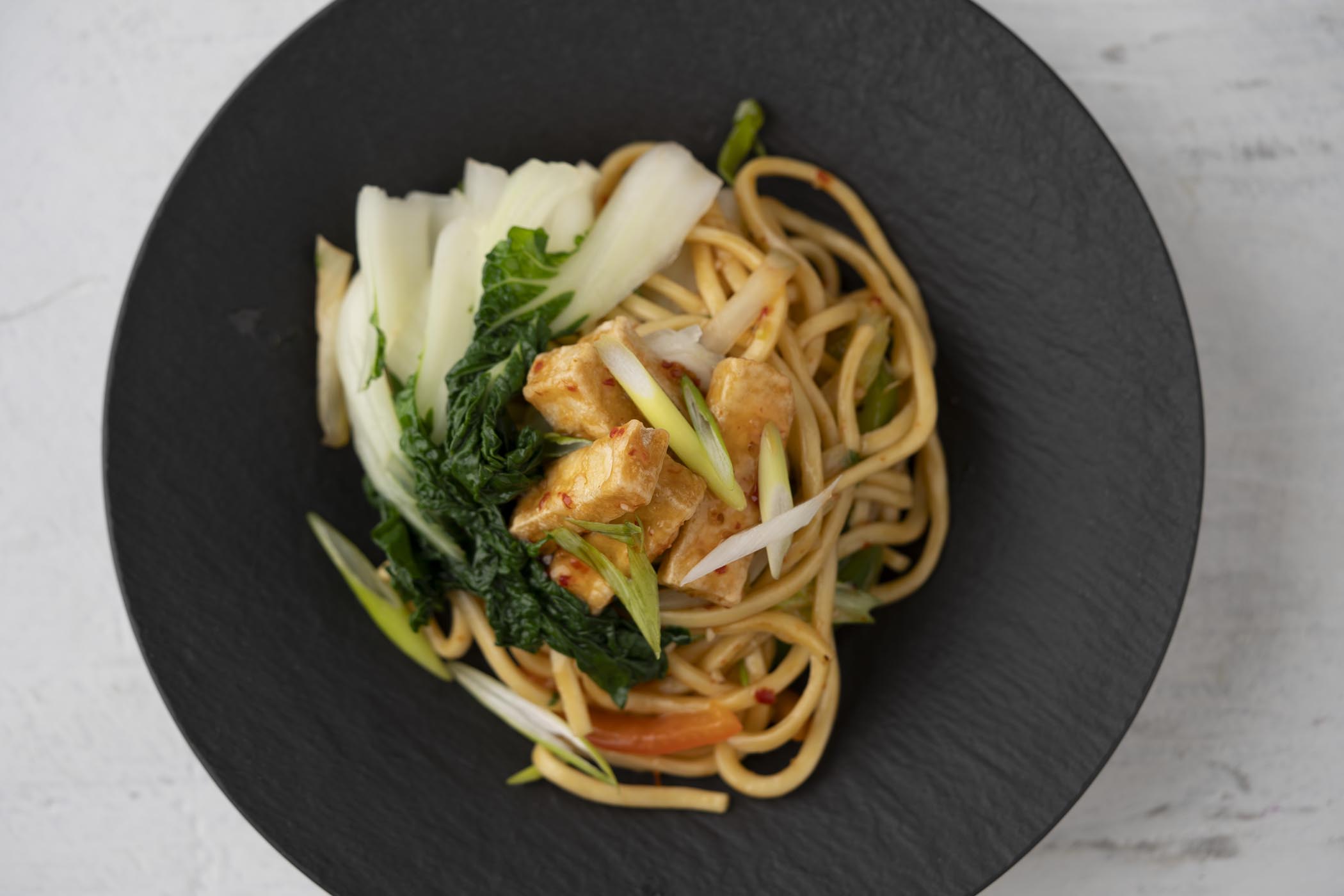
Vegetarian Food Standard
Defining Vegetarian
A vegetarian is a person who chooses to eat a diet of mainly vegetables, fruits, grains, nuts, legumes and seeds with or without eggs and dairy products, and refrains from eating any meat, poultry, game, fish, shellfish (Vegetarian Society).
An individual may choose to follow a vegetarian diet because of concerns about health, animal rights, and environmental responsibility; or for religious reasons. The most common vegetarian diet, known as “ovo-lacto vegetarianism”, incorporates animal products that are not the result of slaughter, such as milk and eggs. Other subdivisions of the vegetarian diet include:

- Lacto-vegetarianism: permits the consumption of milk and dairy products but excludes eggs and other animal products resulting from slaughter. Lacto-vegetarians refrain from eating cheeses that contain animal rennet and gelatin (both products of animal slaughter).
- Ovo-vegetarianism: permits the consumption of eggs but excludes dairy products, such as milk and cheese and other animal products resulting from slaughter.
Food Services at the University of Toronto’s St. George Campus defines a vegetarian diet as “ovo-lacto vegetarian” – a diet that includes vegetables, fruits, seeds, grains and nuts in addition to eggs, honey and dairy products, provided they do not contain by-products of slaughtered animals.
Vegetarian Standard Guidelines
The vegetarian label is intended to certify that foods are vegetarian as per the definition above, in addition to complying with the following guidelines:
All foods labeled as vegetarian or “Veggie” are to be free of meat acquired from the slaughter of an animal and all of its by-products. The following items are excluded from vegetarian foods:
- Meat, poultry, game, fish, or shellfish
- Animal fats (e.g. dripping, lard, suet, tallow), amino acids, aspic, bone, bone charcoal, bone-meal, bristles, collagen, down, dried blood, fatty acid derivatives, gelatin(e), glycerin(e), hoof & horn meal, oleic acid, oleoic oil, oleostearin, pepsin, proteins (e.g. elastin, keratin, reticulin), rennet, skins, stearates, stearic acid, stearin(e).
Vegetarian food can contain the following animal products based on the definition for ovo-lacto vegetarianism:
- Eggs and dairy products: milk, cheese, butter, whey, yogurt and eggs.
Note: Dairy products that include animal rennet or gelatin are not acceptable to vegetarians. - Bee products: honey, royal jelly, etc.
- Shellac: a product derived from the lac insect much like honey from bees. This product is used in confectioneries.
Preparation and Prevention of Cross-contamination
Ensuring that no cross-contamination has occurred during the production or preparation of vegetarian foods is important. Specifically, if the production line is shared with non-vegetarian food, procedures must be followed to prevent mix-ups, contamination or accidental addition of non-vegetarian ingredients into the vegetarian products.
Much like other foods prepared and served by Food Services at the University of Toronto, vegetarian food will follow food safety measures prescribed in the City of Toronto Public Health Guidelines and St. George Campus Safe Food Handling Guidelines. In addition, the University of Toronto food service outlets will prepare vegetarian food in HACCP environments. This food safety measure will ensure that no cross contamination occurs during the preparation or production process of vegetarian foods. Staff will be trained to ensure all the guidelines are followed.
Below are the recommendations set out by The Vegetarian Society on how to best avoid cross-contamination of vegetarian food.
- Frying and Deep Fat Frying
Chips deep fried in oil that fish or meat has been deep fried in is not acceptable to vegetarians. Separate deep fat fryers should be used or, if that’s not possible, the oil should be changed. - Frying and Grilling
Care should be taken when frying on hot plates, grilling or barbequing, so that vegetarian products do not come into contact with meat products. If possible, use a separate grill or barbeque. If that’s not possible, ensure there are distinctive sides to the grill/barbeque for vegetarian products and ensure that meat fat cannot splatter onto non-meat products. - Wok Frying
Ensure separate woks are used for frying. It is not sufficient to wipe out the wok after stir-frying prawns, for example. Separate woks should be used for non-meat products. - Cooking Utensils and Chopping Boards
Separate cooking utensils and chopping boards should be used for preparing and cooking non-meat products. Make sure that you have different basting spoons/tongs/draining spoons/fish slices for meat-free products. Color coding utensil handles is a good way of ensuring that they don’t get mixed up. - Serving
Separate serving utensils should be used for non-meat products. For example: when a separate spoon/tong is needed for serving roasted potatoes cooked in vegetable oil, color coding the handles in green is a good way of remembering to use the correct utensil. Also, separate serving plates should be used. For example, a tray of cut sandwiches should not contain meat/fish sandwiches and non-meat sandwiches. - Food Service Disposable Gloves
When using gloves to pick up food, gloves should always be changed when moving from meat/fish to non-meat products.
Labeling Guidelines
If the ingredients, preparation and serving of a food item follow the above guidelines, it can be labeled as ‘veggie’. The following items can be labeled ‘veggie’ to allow easy identification by students.
- Hot entrées or full meals served in residences, cafeterias and in take-away eco-trays or boxes.
- Vegetarian wraps, salads and sandwiches. These foods can include eggs, honey and dairy products, but cannot have any meat or poultry in them.
- Small snacks like cereals, granola bars, fruit bowls, parfaits, milkshakes, smoothies, nuts and veggie dips.
Conclusion
Introducing a vegetarian specific label to the University of Toronto St. George campus will allow for easier identification of vegetarian safe options for vegetarians and non-vegetarians alike. The ‘veggie’ label ensures the implementation of these guidelines by the food providers and guarantees certified vegetarian food, as defined by Food Services at the University of Toronto, St. George Campus. These measures will encourage students, staff and faculty on campus to buy ‘veggie’ labeled food with confidence.
Not sure what to eat?
Need dietary advice?
Have questions about nutrition?






